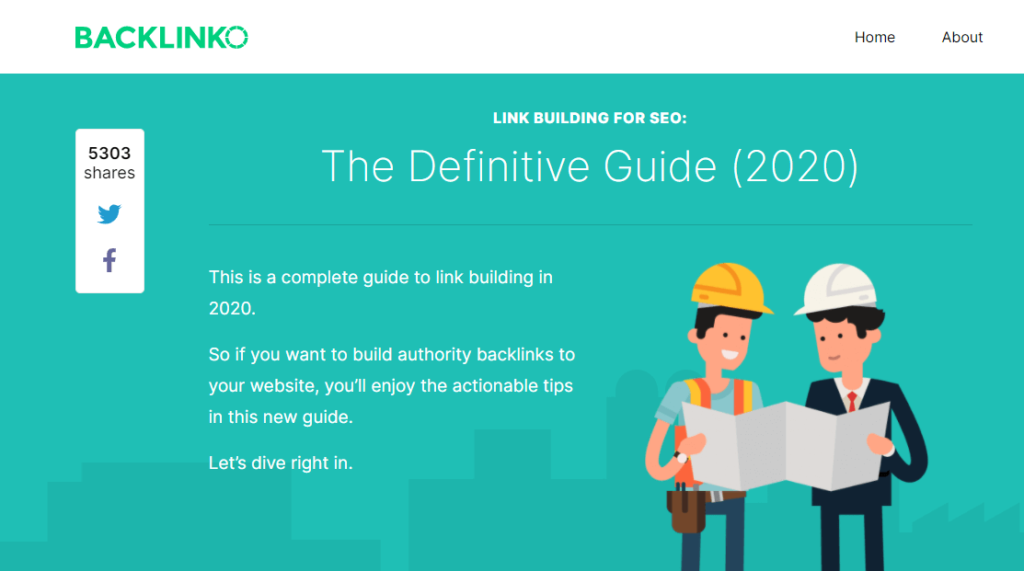I’ve more than doubled my clients’ website traffic simply by optimizing the content they already have.
Historical Optimization, as it’s also called, is the process of updating your existing content (product/landing pages, blog posts, etc.) to improve the impact of your website.
Let’s look at why optimizing older content is important, and how you too can increase your website traffic by being creative with your current content.
Why Optimizing Old Content Increases Website Traffic

1. You defend your position as the best resource

You know that innovative idea or concept you wrote about 4 years ago? Well, it’s not so unique anymore…
Competition naturally increases over time. By now, 10 other brands might have created similar guides, and yeah, some might be better than yours.
By updating older content on a regular basis, you ensure that you always provide the most relevant, useful, up-to-date resource out there. Being the best is the simple, but not always easy, way to create content that ends up on the first page of search engines.
2. Search engines (and people) like fresh content

Search engines like Google exist to provide useful answers to what people want. And most people prefer updated content.
Just think about when you’re searching for something. Are you more likely to check out a page that was published last month or 5 years ago?
Fresh content is a ranking factor. Since it often is perceived as more relevant, it can improve click-through rates and drive more traffic to your website.
3. Your website will be indexed more often
If you update your website on a regular basis, by for example optimizing old content, it encourages search engines to regularly crawl your pages for new information.
The quicker your site is crawled and indexed, the quicker it will be presented to your potential customers via organic search results. The average crawl time can vary from a few days to weeks. Many factors affect this timeframe, and frequent website updates is one of them.
You can also request a URL inspection via Search Console once you’ve updated your website with fresh content.
4. It can improve your page’s authority
Moz has developed a score for page authority and age is one of the contributing factors to higher points. It makes sense that pages that have been around for longer and perform well have earned their right to rank, as long as the subject is relatively evergreen.
While many factors contribute to a page’s authority (such as backlinks), content that has been around for a while can be beneficial – if you make sure that it stays best in class.
5. You reach new audiences

By giving your old content new life and promoting it to your network again, you’re generating a boost in traffic. New visitors increase the probability of more social shares and backlinks.
Every time I update my content, I usually see big increases in traffic, engagement-, and conversion rates shortly thereafter.
6. You save time
While everyone knows it’s important to create content, many struggle to find the time. So if you can publish high-quality content on your website in less time, why wouldn’t you? Apart from updating your current content, you can make sure to get the most out of those pieces that are performing extra well by publishing them in different formats. A blog can turn into an infographic or a video, and vice versa.
How to optimize older content and boost your website traffic

Ok, so you see the benefits of optimizing older content. Great. Now what?
1. Get an overview of what website content to optimize
If you haven’t done any optimizing of old content before, start by making an audit of your website to find out where you should prioritize your time. The goal with the website audit is to get an overview of all your content and decide what action you should take on different pieces.
Divide your website content into 3 categories and set up criteria for each.
1. Content that should be deleted
Maybe you created a detailed guide on how to prepare for the end of the world in 2012 (which, thankfully, turned out not to be required after all)? Or you might still have a landing page going strong for that product you don’t really sell anymore?
Whatever topic – content that’s so outdated or irrelevant that no one apart from your partner or mom would read it, should be deleted since it can harm your website’s overall ranking.
2. Content that doesn’t require any action
Content that is on top of its game. You know, that kind of content that drives traffic, converts, and makes you smile every time you follow up on its KPI:s.
While you don’t need to update this content for now, take note of what content your audience resonates extra with and look into how you can create more of it or re-use it. Such as launching it in a new format, via another channel, or something else.
3. Content to optimize / update
This is content that got potential to rank higher for keywords you care about, but isn’t performing as well as it could. It can be improved for some reason. In terms of relevancy/match with search intent, quality, language, or something else.
You can further divide this content into 2 sub-categories, which we’ll dive more into below:
3 a) Content that drives traffic but doesn’t convert
3 b) Content that doesn’t drive traffic (yet)
When you know what content to update, your goal is to make the user experience for your audience on those pages as good as possible. Low traffic, low conversion rates, and so on are signs that something isn’t quite right and probably can be improved.
2) Map out how to optimize high-traffic but low-converting content
Start by analyzing those pages that drive traffic but don’t convert. Make sure your content matches your target audience’s’ search intent. Update old information, the structure, the CTA, or whatever else you identify as potential solutions to improve those conversion rates.
3) Find out how to increase the traffic to high-converting posts
Continue with pages that convert but don’t receive much traffic. Imagine what results you could generate for your business if you got those to rank better? Carry out new SEO research, optimize based on what you learn, and re-publish the content like new.
A few extra tips to keep in mind as you’re working on your content updates
Re-use content when possible
- Try a new format or channel: Why not dive more in-depth in an e-book or summarize something complex in a fun video?
- For content that is performing well; follow up with a piece that adds more value to it. Can you take the topic to the next level, or create a guide for more experienced readers?
- Think about how to reach new people with the same content, by for example promoting it in new niche forums, etc.
Target new keywords
If it’s been a while since you published a specific piece of content, the most important keywords for that topic might have evolved. Or maybe you just didn’t do your SEO homework back then.
- Make sure that you’ve covered the most relevant keywords.
- Add new sections to your content if needed.
- Keyword gap research allows you to discover which keywords your competitors rank for, while you don’t. Let’s change that. Several tools, such as SEMRush, help you get an overview of new keyword opportunities.
Sometimes it’s better to rewrite the content
If it’s too much work to optimize what’s there, consider rewriting it completely. You could re-write it on the same page if that makes sense, or create a new page and re-direct the old one.
4) Publish your updated content as new

Once you’ve improved your old content, publish it as if it was new. Which it partly is.
Here is an example of a comprehensive guide from Backlinko, which they constantly update.
If you’re working on a blog post or some content where the date is visible, make sure that the changes are significant enough to justify a change in date. You can also clarify that the post originally was published earlier by using “Latest Updated”.
5) Promote your optimized content just like you would with new content.

Invest time in link building and networking to increase the authority of your domain and watch those organic rankings improve. Follow up on results using analytic tools (such as Google analytics and Search Console) and scale initiatives and tactics that generate results.
6. Make optimization of old content a part of your routine
While new content is very important, don’t underrate the effect of optimizing content you already have.
Make optimizing old content a part of your routine. Start with a content audit. Zoom in on the content that is falling behind and analyze why. Re-use what works, improve what doesn’t, and delete content that doesn’t add value.
If you make it a habit to optimize old content (how often depends on how frequently you publish new content), you will see those organic search results reach new highs.
What are you doing to make sure that your content holds its position as the best out there?








0 Comments